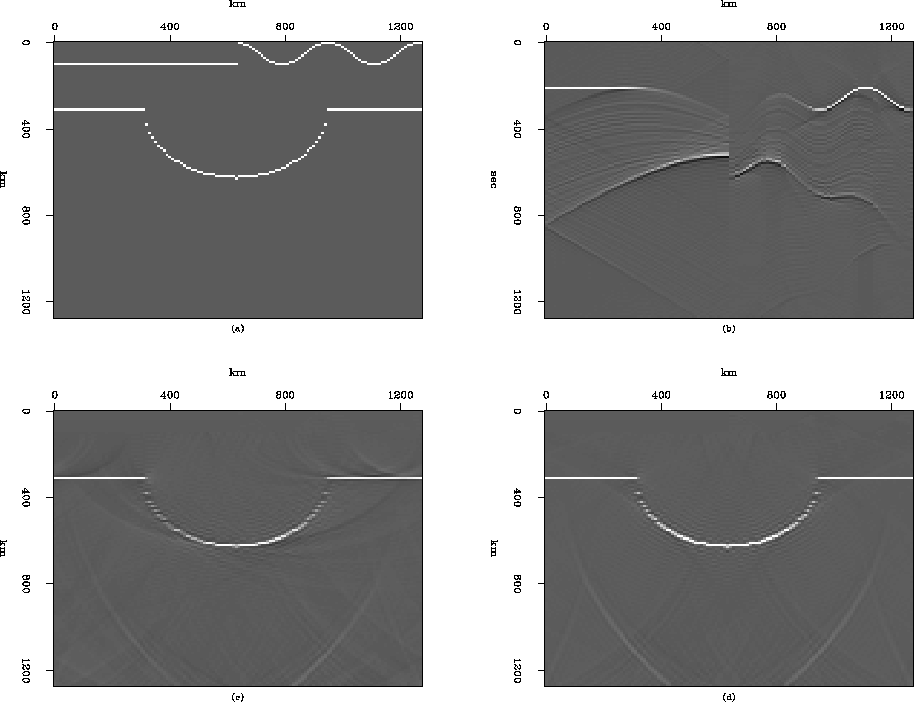




Next: Finite-difference migration in v(x,z)
Up: LEAST-SQUARES IMAGING
Previous: Gazdag migration in v(z)
An algorithm for depth migration when the surface is nonflat
is presented by Ji and Claerbout (1992) elsewhere in this report.
If the surface fluctuates severely, the aperture of the wavefield
varies with the surface.
The varying aperture along the surface results
in an amplitude change in the image.
Figure ![[*]](http://sepwww.stanford.edu/latex2html/cross_ref_motif.gif) (c) shows this effect
caused by the undulating topography shown in Figure
(c) shows this effect
caused by the undulating topography shown in Figure ![[*]](http://sepwww.stanford.edu/latex2html/cross_ref_motif.gif) (a).
In the portion of flat surface the reflector has imaged correctly,
but in the portion of nonflat surface the image shows slight amplitude
change with some background noise.
The result of the least-squares imaging is
shown in Figure
(a).
In the portion of flat surface the reflector has imaged correctly,
but in the portion of nonflat surface the image shows slight amplitude
change with some background noise.
The result of the least-squares imaging is
shown in Figure ![[*]](http://sepwww.stanford.edu/latex2html/cross_ref_motif.gif) (d); it is more correct than
the image after migration.
Topomiginv
(d); it is more correct than
the image after migration.
Topomiginv
Figure 7 Least-squares Gazdag imaging from an irregular surface:
(a) A syncline reflector model under the undulating surface
(upper white line),
(b) The data obtained by the Gazdag modeling using
the algorithm introduced by Ji and Claerbout (1992),
(c) The image obtained by the Gazdag migration for (b),
(d) The image obtained by the least-squares Gazdag
imaging for (b) (after 10 iterations).






Next: Finite-difference migration in v(x,z)
Up: LEAST-SQUARES IMAGING
Previous: Gazdag migration in v(z)
Stanford Exploration Project
11/17/1997

![[*]](http://sepwww.stanford.edu/latex2html/cross_ref_motif.gif) (c) shows this effect
caused by the undulating topography shown in Figure
(c) shows this effect
caused by the undulating topography shown in Figure